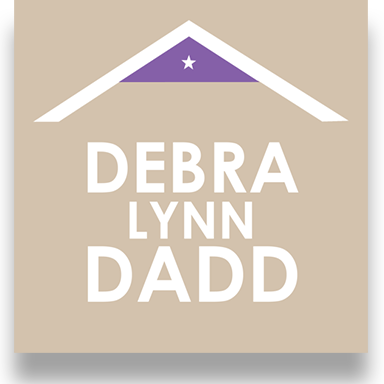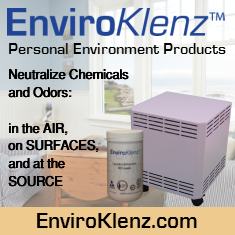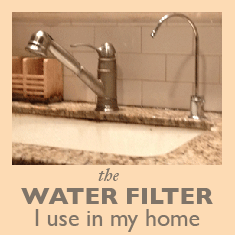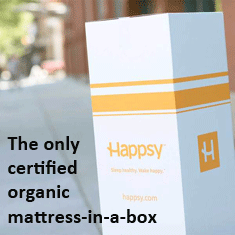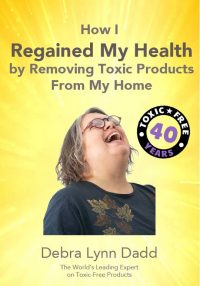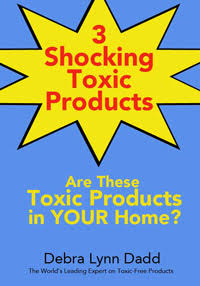
Water | Swimming Pools
DriCore Subflooring
Question from Patricia
Hi Debra,
We’re planning on covering our basement concrete floor with DriCore subflooring. We will seal the floor with an AFM/Safecoat urethane after installation. The subfloor will become the floor, as it will not be carpeted or tiled. The DriCore MSDS, link here www.dricore.com/en/pdf/msds.pdf, says it has has phenol formaldehyde resin in the core. I talked with the manufacturer, (www.DRIcore.com and phone 1-866-976-6374) who said the panels are sealed with a water-based acrylic sealant. I will have my husband do all cutting outside, to decrease any chemical dust in the basement.
My question…will the formaledhyde offgas? From the MSDS information do you see any potential problems?
This is the only option that I found that will work for the present situation with our basement floor, whioh has very old red concrete stain that “runs” when it gets wet and leaves a powdery dust on shoe soles. We haven’t been able to get it washed off in the 24 years we’ve lived here. Half the floor is also covered with old lineoleum tile squares over the red stain. I don’t know if there is asbestos in the tiles. The other half was painted over the stain, and the paint is now wearing off. The DriCore representative said Dricore can be installed over the top of the present floor as is….that’s a huge selling point for us. I want to be as sure as possible that I won’t have problems before making this costly purchase.
Thanks for all the work you do to help us improve our health, Debra.
Debra’s Answer
I can’t give you a definitive answer without seeing the product, but in general, the idea seems like a good solution for basements.
I was talking with a client on the phone a few weeks ago about needing to put a subfloor in her basement, and the contractor was going to build a subfloor much like this, with plywood and a sheet of polyethylene. This product came up as a possibility, which is an easier way to accomplish the same thing.
The hazards noted on the MSDS are exposure to wood dust and formaldehyde. I’m not concerned about the wood dust because that would not be a problem except during installation. The formaldehyde levels given are below the accepted levels for industrial exposures and which cause cancer. However, if you are very sensitive, and you are covering a large space, they could be too much for you.
These panels do have a finish on them, however, not all finishes block formaldehyde.
Before you invest in this, check with AFM to make sure that the product of their you are using will effectively block any formaldehyde. And I would suggest that you get one of the panels and live with it before you have them installed in your basement.
If you were going to put another flooring on top, this would be less of an issue. You could always put down a sheet of foil that would block the formaldehyde completely, and then lay another floor on top of that. Or, if you laid a ceramic tile floor on top of this subfloor, that would block the formaldehyde completely as well.
Fleece Mattress Pad
Question from Ananda
Hi Debra,
I seem to recall that you mentioned a few months ago, that you would like to find a wool fleece mattress pad. I saw such a product on a recent trip. It was an organic wool fleece mattress pad with an organic cotton backing. I looked at it, and it seemed nice and thick and luxurious. The link to the company’s website is:
Holy Lamb Organics: Wool Fleece Toppers
Hope this helps.
Ananda
Debra’s Answer
Thank you! This is wonderful! It’s made of 100% Organic Merino Wool stitched to a 100% Organic Cotton Backing. I’m going to start saving up for one.
Diesel Cars
Question from Bob
Hi Debra,
I recently bought an 1987 mercedes 300d diesel and each time I have driven it I feel worse. The car was in great shape pretty clean inside and I super cleaned it in and out with my nontoxic cleaners. The engine was pretty dirty with built up oil and fuel GRIME and I have cleaned most of the engin as well. The a/c is not operational and I feel I am getting my reactions from either the oil and fuel on the engin, dielel fumes or a possible a/c freon leak as the system was most likely recharged prior to me buying the car and could have a slow leak. I am also hypersensitive to mold however I dont feel that it is mold as the reactions I get are different. I am going to finish cleaning the engin remove the freon from the a/c system and see how I do but I think I am in trouble and may end up selling the car and getting a gas model. I dont know if dielel’s are considered more toxic than gas but I have learned that the engines are more oily and dirty???Any help would be appreciated so much.
Thanks,
Bob Fla & Ny
Debra’s Answer
My mechanic husband says…
You can take your Mercedes to an air conditioning shop and they can check to see if there is a freon leak. You might be able to get this for free, or for a very low cost. It’s worth knowing if there is a leak. If it is leaking, and you don’t want to repair the leak, have the air condition system “evacuated” to empty all the freon.
To remove the oil and fuel on the engine, take it to an engine steam cleaning place to clean the engine and transmission thoroughly. Repair any obvious oil leaks.
Get the exhaust system checked at a muffler shop. They will usually do this for free or low cost.
Another possibility is to do as we did and covert it to run on vegetable oil! See our veggie oil car at Our Vegetable Oil Car.
Larry said it’s likely that if you check the points outlined above and make any necessary repairs, your diesel car probably won’t be a problem.
Non-Toxic Way to Clean mortar from new Brick on house without getting into garden?
Question from doodle
Hi Debra! My father has just finished bricking my home, we did probably 90% brick, anyways, he mentioned I might need to use an acid on my brick to get the excess and splatter of mortar off. I’m afraid to use this, being I try to use everything green. I also worry about the garden out back. I tried a little vinager, of course it was no match to the mortar. (It worked well in my kitchen grout tho! lol) Do you have any suggestions? Oh they told me since I had a sanded finish on my brick that if i used a wire brush or power washer it would take the finish off. I havent a clue what to do now? They also said to try Tide, and even though I use Eco friendly laundry detergeant I thought it was better than acid on my brick, but… i just tried a little spot and it only took the tiny stuff off. Any suggestions? 
Debra’s Answer
Readers?
L. A. Times: In Search of A Nontoxic Home
Question from lmpd42
This article about the home of a woman with MCS appeared in the L. A. Times this week.
wL. A. Times: In Search of A Nontoxic Home
Debra’s Answer
Fabri-coate fabric protector
Question from Karen
I have a question about Guardsman Fabric-coate, a fabric protector. My daughter is moving to her first apartment and found a sofa she loves. The salesperson is, of course, pushing for this product to be put on the sofa and used an impressive demonstration. The sofa is polyester and I would like to know which is worse…the fabri-coate or the polyester outgassing. Would the protector keep the sofa from outgassing? She is not MCS but I got a headache and scratchy throat after visiting the furniture store. Any thoughts?
Debra’s Answer
I contacted the company for the MSDS sheet on this product and it contains propylene glycol and formaldehyde, which both would outgas from the sofa after it is applied.
It wouldn’t block the outgassing of fumes from other synthetic materials used to make the sofa.
Non-toxic alternative to “compressed air”?
Question from L.A.
Are the chemicals in the “compressed air” duster sprays for cleaning computer keyboards safe? I don’t like spraying chemicals in my home if I can possibly help it.
I’ve read about mini-vacuums but user feedback invariably says they are useless. Are there any other alternatives to chemicals that work well?
Debra’s Answer
I looked at a few Material Safety Data Sheets (MSDS) for compressed air dusting products and found that they all contained 1,1,1,2-Tetrafluoroethane as the active ingredient. It’s a gas that has numerous health effects listed. You can read more about it at these links:
Your question brought to my attention that my own keyboard needed cleaning. I used a pair of tweezers with sharp points (designed for removing splinters) and ran the tips between the keys. Picked up a lot of clumps of dust. I picked out the balls with the tweezers, then just blew the remaining particles away with my own breath.
Readers, any tips on cleaning computer keyboards?
How Do I Stuff a Mattress?
Question from Linda
Hi, i was wondering if you could give any info on how to stuff a mattress. I am going to order 80 pounds organic cotton from white lotus for $359 and 20 pounds of wool layers for $139. I am also gona purchase an organic queen futon cover from heart of vermont for $190. This is the only way we can afford an organic bed right now. So i was wondering what if any info you could give me about layering or stuffing the case. I would appreciate any info. We are organic on a budget, and this is what we can afford for now, we will save about $500 if we make it ourselves. Thank you
Debra’s Answer
How smart you are to get great materials and save money by utilizing your own labor.
Any of these companies where you purchased the materials I’m sure could give you expert advice on stuffing.
Many years ago I made some pillow cases and stuffed them with organic cotton batting for sofa cushions. I just pushed big chunks of batting in the cases. You want to fill the case very tight with batting.
But ask the mattress makers. They are stuffing all day long.
Nature’s Rest Mattress
Question from Lisa
I’m just about to purchase a new mattress for my daughter’s big-girl bed and was wondering if anyone has purchased a Nature’s Rest mattress and if yes, what style or level of green did you buy. As with anything it gets very confusing when everyone has their own language when it comes to natural products.
Debra’s Answer
Flame preventing chemicals in beds
Question from Ron
I am reading from some sources that even natural mattresses are now required to add some sort of flame resistant chemical to their beds because even wool can no longer pass the open flame test that is used. The article claims that these manufacturers are not required by law to show what chemicals they are using or even admit that they do so. Is there some place to find information that would confirm or refute this claim? Since the source I read it from is actually selling mattresses, I am concerned that it may be in his own best interest to disseminate such information whether true or not.
Debra’s Answer
There are new flammability laws. To make a complicated story short, there are flame retardant materials of various kinds used in natural mattresses, and they are not the toxic flame retardants of the past. There are many new flame retardant materials that are completely nontoxic used by natural mattress companies.
It would be interesting to survey all the natural mattress companies and make a list of flame retardants used.
If anyone would like to go to websites or call around and get the information, you can post it here and I’ll explain the different types of flame retardants you find.
In general, be skeptical of claims made about other products made by people wanting to sell their own product. The best way to sell a good product is to tell the truth about the benefits of your own product.
